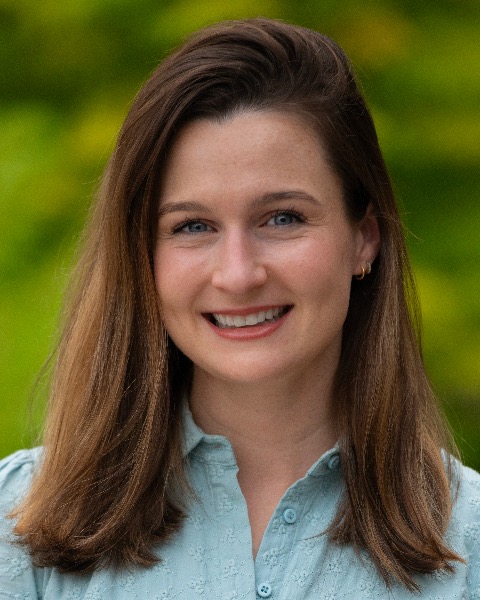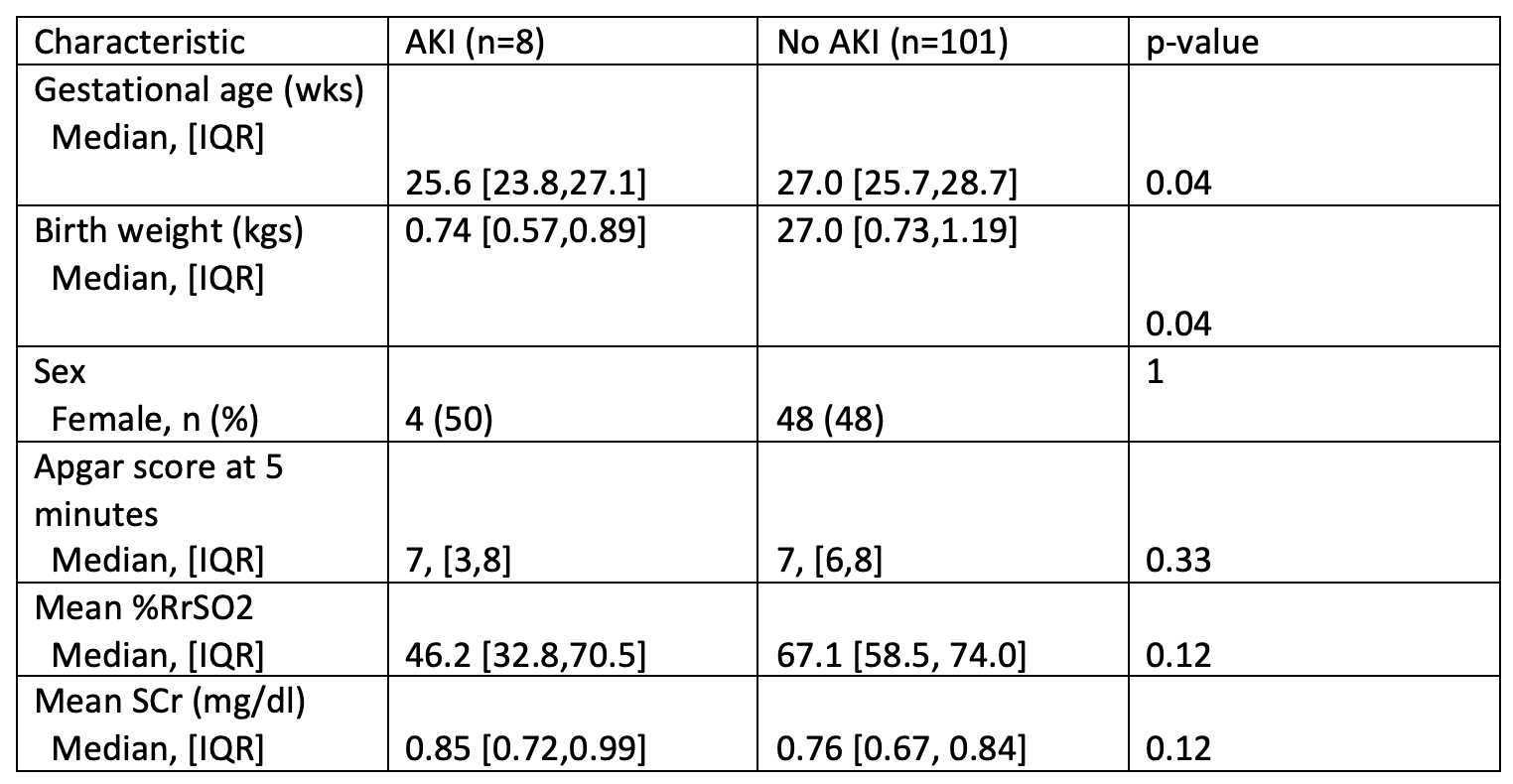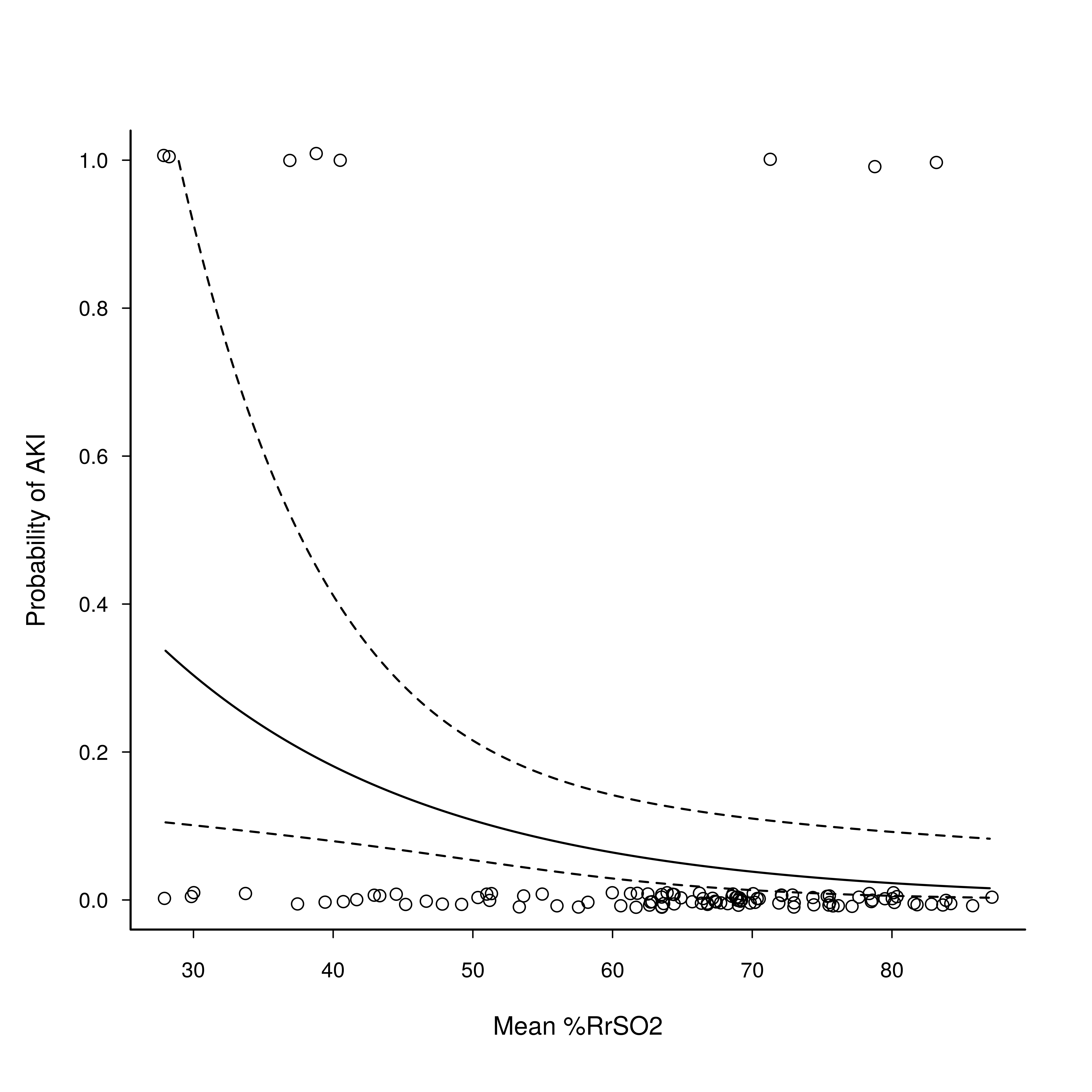Neonatal Nephrology/AKI
Category: Abstract Submission
Neonatal Nephrology/AKI I
108 - Investigating the association between renal tissue oxygenation and development of AKI in preterm neonates
Friday, April 22, 2022
6:15 PM - 8:45 PM US MT
Poster Number: 108
Publication Number: 108.125
Publication Number: 108.125
Paige E. Condit, University of Wisconsin Madison, Madison, WI, United States; Jennifer Chuck, Stanford University School of Medicine, Palo Alto, CA, United States; Michael R. Lasarev, University of Wisconsin School of Medicine and Public Health, Madison, WI, United States; Valerie Y. Chock, Stanford University School of Medicine, Sunnyvale, CA, United States; Matthew W. Harer, University of Wisconsin, Middleton, WI, United States

Paige Condit, MD (she/her/hers)
NICU fellow
University of Wisconsin School of Medicine and Public Health
Madison, WI, United States
Presenting Author(s)
Background: Neonatal acute kidney injury (AKI) is a frequent problem associated with short- and long-term consequences. Neonatal AKI is defined by elevations in serum creatinine (SCr) and decreases in urine output, yet, collecting both of these measurements in the neonatal population is fraught with challenges. Monitoring renal regional saturation of oxygen (RrSO2) with near-infrared spectroscopy (NIRS) can potentially diagnose AKI noninvasively before changes in traditional markers of kidney function thereby creating a therapeutic window for intervention.
Objective: To evaluate the relationship between RrSO2 changes and SCr during the first week of age for preterm neonates born at < 32 weeks gestational age (GA).
Design/Methods:
Prospectively measured neonatal RrSO2 values collected during the first week of age in neonates born at < 32 weeks GA were analyzed from two sites (A & B). Variables were compared between groups (AKI vs no AKI) using rank-sum or exact unconditional tests for continuous and categorical variables, respectively. Poisson regression was used to estimate the rate of AKI events over the duration of observation which varied by patient.
Results: 109 neonates (32% from A and 68% from B) were included and 560 SCr values were obtained during the first week of age (Table 1, demographics). Eight cases of AKI were observed in the cohort (all diagnosed with SCr) with a similar prevalence between the two sites (9% at A and 7% at B, p=0.767). For the eight cases with AKI, the median [IQR] of their mean %RrSO2 was 46.2 [32.8,70.5] and for the non-AKI cases it was 67.1 [58.5, 74.0] (p=0.12). A decrease of 10 percentage points in mean %RrSO2 was associated with a 1.7-fold increase in AKI risk (95% CI: 1.1–2.6; p = 0.016). The association between AKI risk and mean %RrSO2 is shown in Figure 1.Conclusion(s): Decreases in mean RrSO2 in neonates born at < 32 weeks GA were associated with an increased risk of AKI. Further prospective studies are necessary to determine whether RrSO2 changes can accurately detect AKI and correlate with urinary biomarkers of kidney injury. Future guidelines and studies should focus on early interventions and therapies that can improve renal oxygenation and whether improved renal oxygenation improves short- and long-term kidney outcomes.
Table 1. Demographic and clinical characteristics for infants with and without AKI
Demographic and clinical characteristics for infants with and without AKI
Figure 1. Association between mean %RrSO2 (horizontal axis) and probability of developing AKI (vertical axis). Individual mean %RrSO2 values are indicated by circular points for 8 infants who developed AKI (probability 1; top edge) and the other 101 who didn't (probability 0; bottom edge). Solid line shows increasing probability with decreasing mean %RrSO2 and 95% confidence interval as surrounding dashed lines.
Association between mean %RrSO2 (horizontal axis) and probability of developing AKI (vertical axis). Individual mean %RrSO2 values are indicated by circular points for 8 infants who developed AKI (probability 1; top edge) and the other 101 who didn't (probability 0; bottom edge). Solid line shows increasing probability with decreasing mean %RrSO2 and 95% confidence interval as surrounding dashed lines.
Objective: To evaluate the relationship between RrSO2 changes and SCr during the first week of age for preterm neonates born at < 32 weeks gestational age (GA).
Design/Methods:
Prospectively measured neonatal RrSO2 values collected during the first week of age in neonates born at < 32 weeks GA were analyzed from two sites (A & B). Variables were compared between groups (AKI vs no AKI) using rank-sum or exact unconditional tests for continuous and categorical variables, respectively. Poisson regression was used to estimate the rate of AKI events over the duration of observation which varied by patient.
Results: 109 neonates (32% from A and 68% from B) were included and 560 SCr values were obtained during the first week of age (Table 1, demographics). Eight cases of AKI were observed in the cohort (all diagnosed with SCr) with a similar prevalence between the two sites (9% at A and 7% at B, p=0.767). For the eight cases with AKI, the median [IQR] of their mean %RrSO2 was 46.2 [32.8,70.5] and for the non-AKI cases it was 67.1 [58.5, 74.0] (p=0.12). A decrease of 10 percentage points in mean %RrSO2 was associated with a 1.7-fold increase in AKI risk (95% CI: 1.1–2.6; p = 0.016). The association between AKI risk and mean %RrSO2 is shown in Figure 1.Conclusion(s): Decreases in mean RrSO2 in neonates born at < 32 weeks GA were associated with an increased risk of AKI. Further prospective studies are necessary to determine whether RrSO2 changes can accurately detect AKI and correlate with urinary biomarkers of kidney injury. Future guidelines and studies should focus on early interventions and therapies that can improve renal oxygenation and whether improved renal oxygenation improves short- and long-term kidney outcomes.
Table 1.
 Demographic and clinical characteristics for infants with and without AKI
Demographic and clinical characteristics for infants with and without AKIFigure 1.
 Association between mean %RrSO2 (horizontal axis) and probability of developing AKI (vertical axis). Individual mean %RrSO2 values are indicated by circular points for 8 infants who developed AKI (probability 1; top edge) and the other 101 who didn't (probability 0; bottom edge). Solid line shows increasing probability with decreasing mean %RrSO2 and 95% confidence interval as surrounding dashed lines.
Association between mean %RrSO2 (horizontal axis) and probability of developing AKI (vertical axis). Individual mean %RrSO2 values are indicated by circular points for 8 infants who developed AKI (probability 1; top edge) and the other 101 who didn't (probability 0; bottom edge). Solid line shows increasing probability with decreasing mean %RrSO2 and 95% confidence interval as surrounding dashed lines.